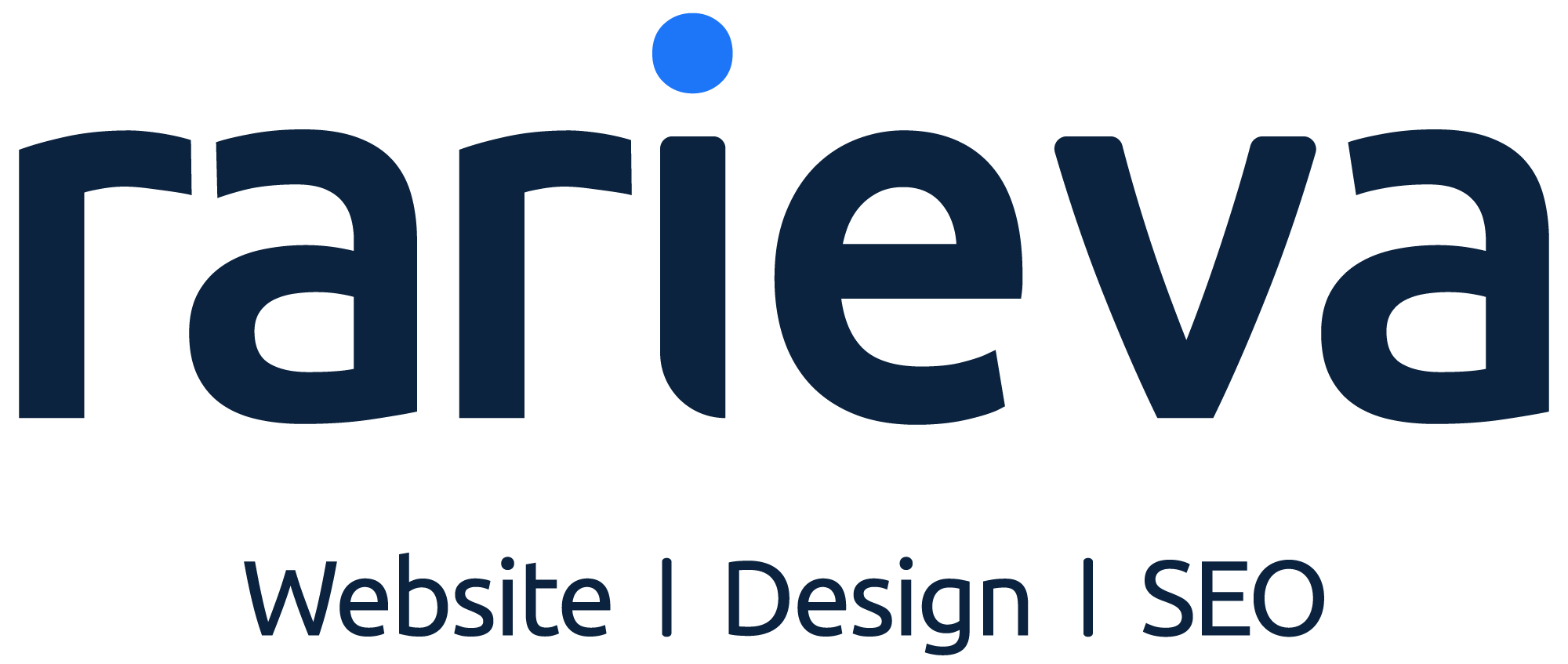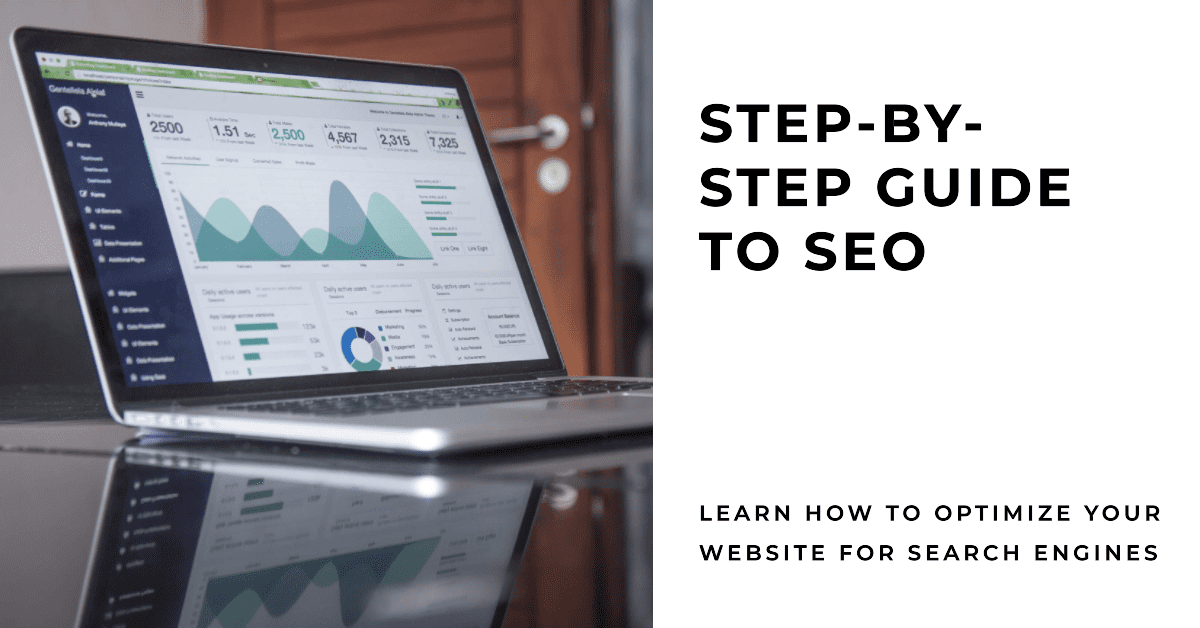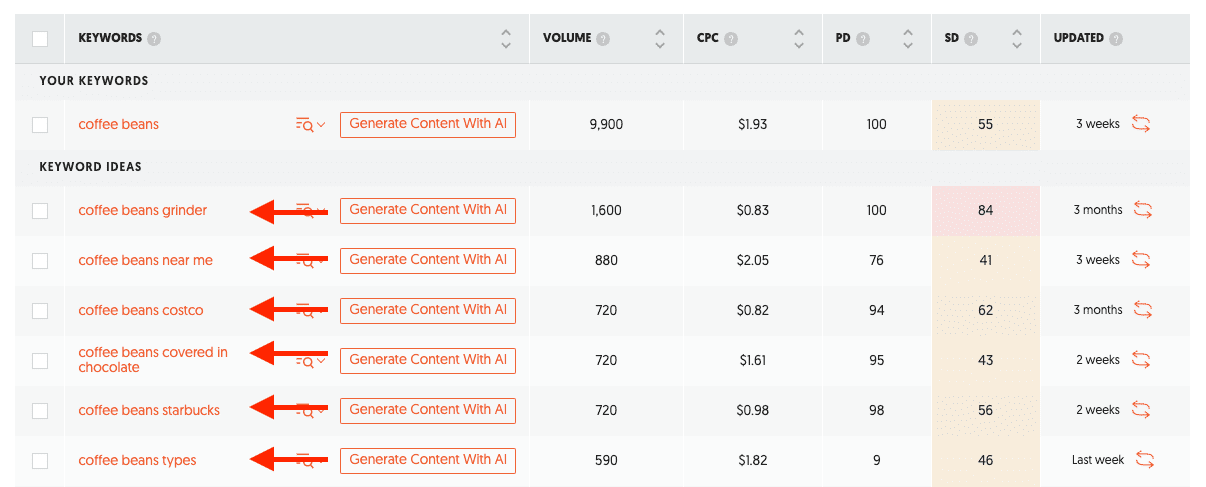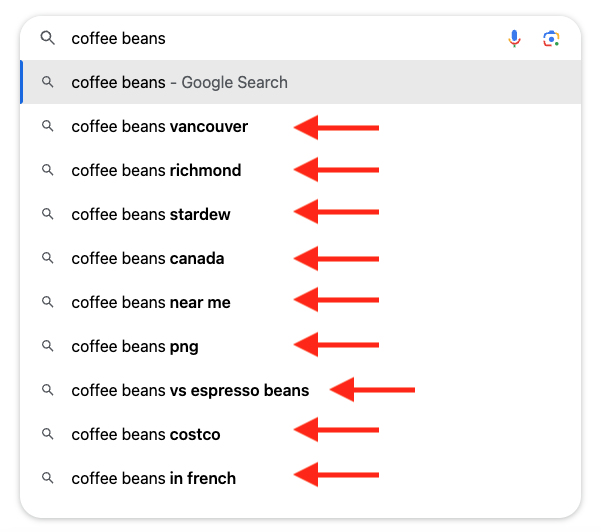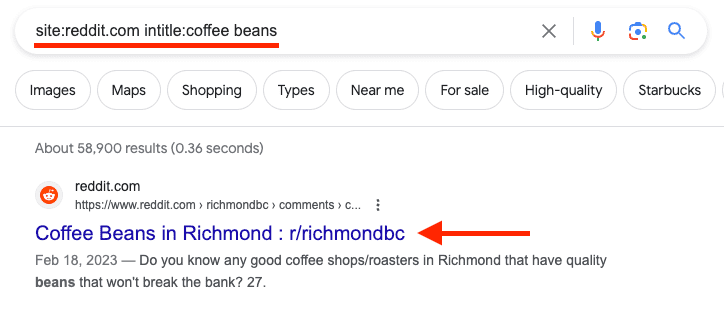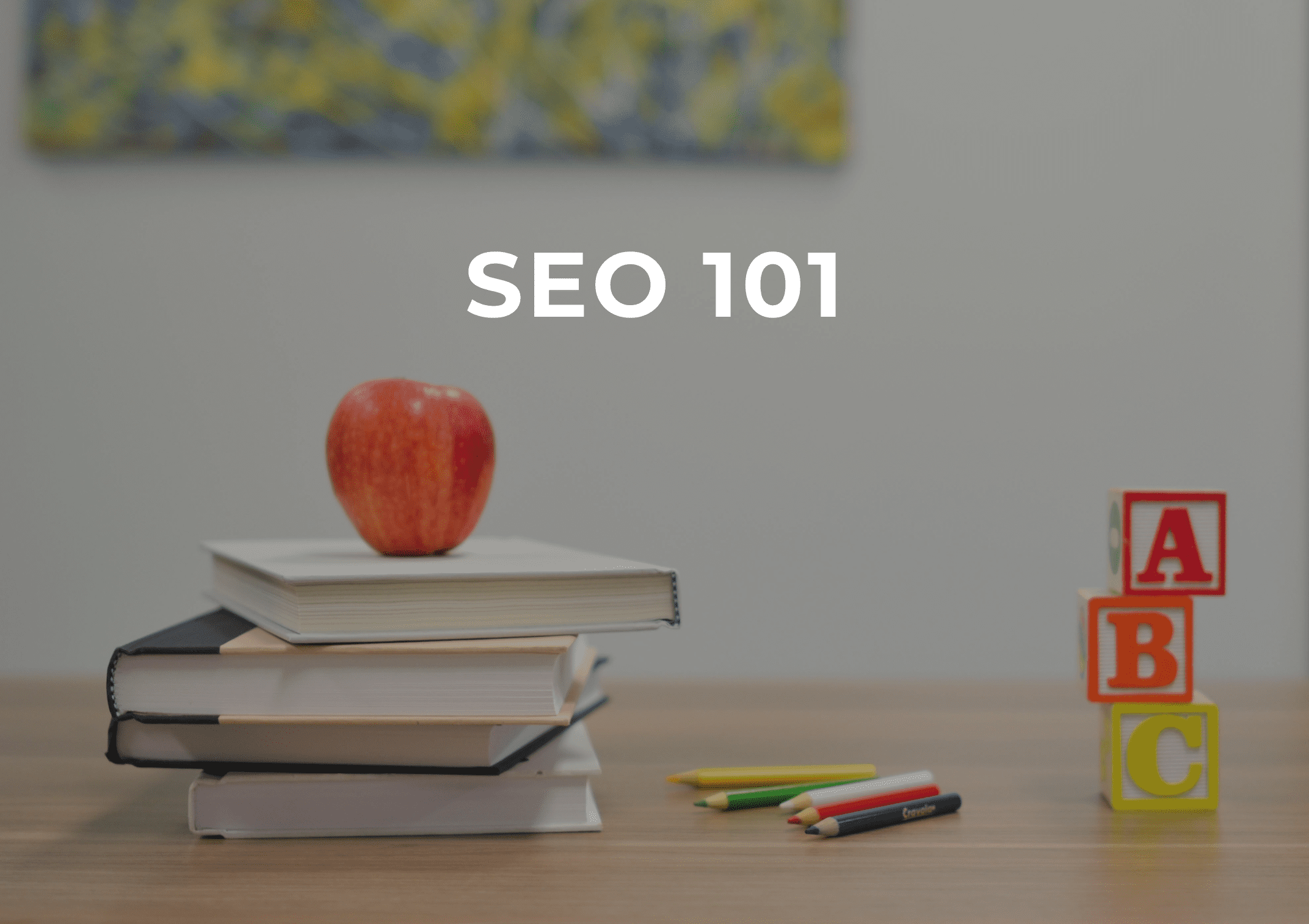Are you trying to figure out how to do SEO yourself? Good on you! You’ve come to the right place. This step by step guide to SEO will set you off on the right path to ranking on Google.
If you haven’t already, check out my blog post on SEO 101. You need to understand why SEO is important, what is SEO, and the different types of SEO is first.
In this post I’ll take you through the steps I take when I conduct my SEO keyword research for my websites. If you have strong SEO practices in place, it’s only a matter of time before your website starts ranking higher.
SEO for beginners: Step by step guide to SEO
It doesn’t matter what industry you’re in — all SEO strategies begin and end in the same way. To make it easy to follow, let’s pretend I’m researching the topic of “coffee beans” so my website can rank higher for it.
How to do SEO yourself
If I’m wanting to rank for the topic of “coffee beans”, here is a breakdown of my process:
- Competitor Research
- The first step is to go to Google. Google already has already done all the heavy lifting for you by listing all the best ranked websites out there. I would google “coffee beans” and click on the first non-advertised and sponsored website. In this example we’re focusing on organic traffic.
- Take a look at the website and note down all the types of pages they have and the type of content they post.
- Repeat the process — you want to make sure you do research on as many competitors as possible, I usually do research on a minimum of 10 competitors.
- Primary keyword research
- Take this image of Wikipedia’s page on “coffee beans”. You can see that a lot of the keywords are links. Not every website will do this but you can start training your eyes to spot keywords with this method.
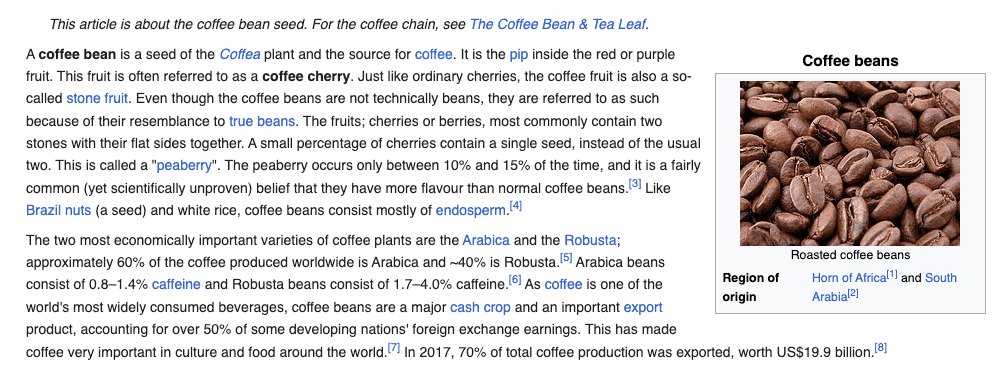
-
Now put the URL of the website into a site auditor you have chosen. If you don’t which one to use, check out the SEO tools I use. The one I utilize a lot is Ubersuggest by Neil Patel.
From the image below you can see all of the keywords that website is ranking for and also the volume and SEO difficulty. When most SEO agencies tell you, “choose the highest volume with the lowest SEO difficulty”, they are right but also incorrect at the same time. When you’re in a very competitive and saturated industry it’s pretty difficult to find the ideal keyword. So how do you combat this? To start, first choose your primary keyword — here I will choose “coffee beans” regardless of the difficulty.
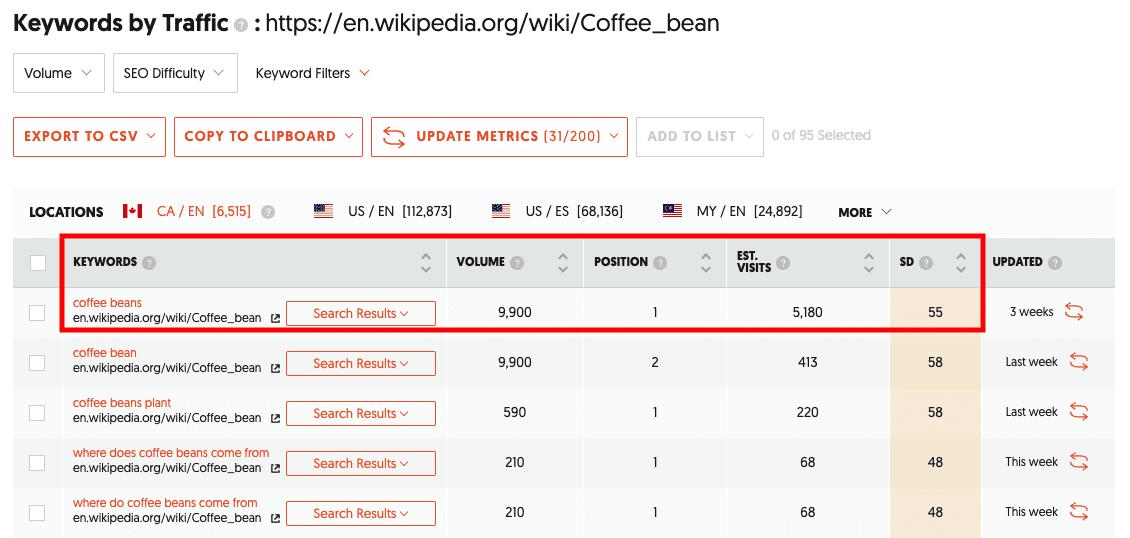
- On-page optimization
- Now that you have completed most of your search results, you can now move onto implementing your new keywords into your content. Let’s start with on page optimization.

- If you’re using RankMath like me you should see something similar to the bottom image when you’re editing your Title, URL, and meta description. Yoast SEO should have something similar to this too.
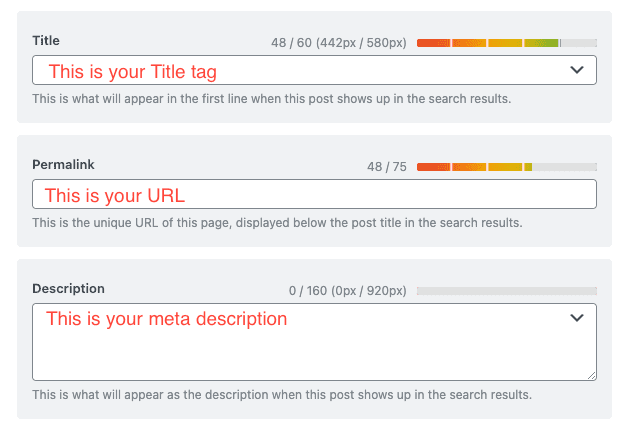
-
Title
-
For your website pages
- You need to make your title as standard as possible. Take a look at your competitors. If you’re trying to make a product website then it would be “Homepage”, “Products page”, “About page”, “Payment page”, etc.
- Don’t try to make it over complicated. You might be able to understand it but your users probably won’t.
-
For your website pages
-
URL
-
With your URL you would want to follow the rules below.
-
URL structure:
- Keep URL short
- Avoid ugly URLs
- Add medium tail keywords in URL
- Don’t put dates in URLs
- SSL certificate
- User hyphens not underscore
- No special characters
- Use URL of max 2 folder ex. rarieva.com/blog/seo/services
-
With your URL you would want to follow the rules below.
You can see Wikipedia has it clear and concise:

-
Meta Description
- Add your primary keyword into a meta description that will capture your users attention
- Heading tags (H1, H2, H3, H4, H5, H6)
- Heading tags are important, they help search engines understand your content structure. If I were to have no heading on this blog post, you would probably have a hard time processing information.
- When you write your heading tags, it’s important to have your focus keyword included into your H1.
- You’ll want to lay out your webpage logically: H1 > H2 > H3 > H4 > H5 > H6. Your primary keyword should be in your H1 and then your relevant keywords should be in the others.
- Keyword in content
- This is where your keyword variants will come in handy. In my case it’ll be something like “coffee beans”, “ground coffee beans”, “How to choose good coffee beans”. I will add any keywords deemed by Google to be relevant to my content.
- Link building for your website
-
Adding relevant links to your website is just as important as using keywords. You’ll notice that throughout this blog post I have anchor texts with links that are relevant to this post. You want to make sure your links are natural and not spamming your blog post just to trick search engine.
-
Here are some link building mistakes to look out for:
- Too many exact-match anchors
- Not enough semantic keyword anchors
- Not enough brand mentions
- Not enough social signals
- Buying backlinks
- Exchanging links on massive scale
- Also don’t be afraid to link to your competitors from time to time.
-
Here are some link building mistakes to look out for:
- Website rank monitoring
- You want to keep track of your site health with site auditing tools like Ubersuggest, Semrush, Ahrefs, etc. To err is human, you might’ve missed something when you were optimizing your website. Site auditing tools will help you catch those mistakes and also give you suggestions on what needs to be improved.
- It also helps you keep track of which keywords you are trying to rank for. You may want to occasionally switch them out if you see they are not working out for you. Just make sure you give it some time to take effect. It’s not going to magically appear all of a sudden, especially when your domain is new.
Go ahead and try these methods to scale your SEO ranking, and feel free to check out my post about the SEO tools I use often!
